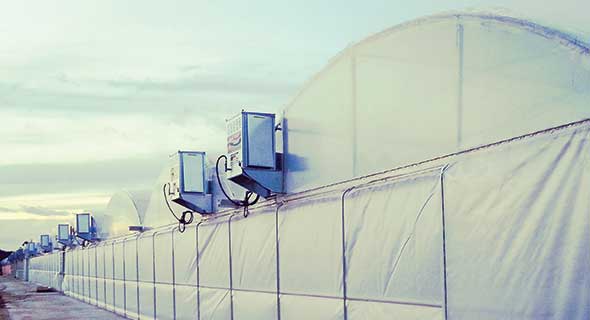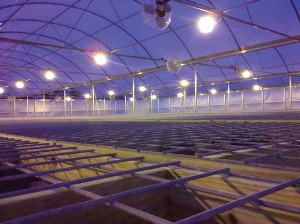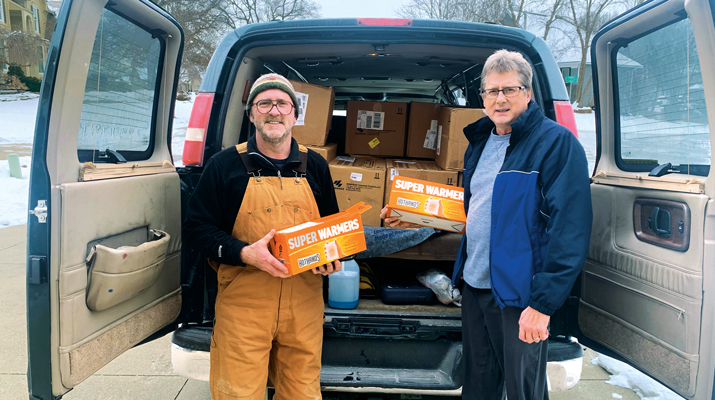Cultivating gallons with greenhouse growers

The greenhouse market is one of several agricultural opportunities in which propane retailers can invest to grow gallon sales. Photos courtesy of Emerald Coast Growers
Propane prices are a big deal to Jimmy Hershfeld.
Hershfeld makes a habit of checking prices routinely. He receives an update on propane prices every evening from a local propane retailer. He also checks for propane closing prices at Mont Belvieu in The Wall Street Journal.
Hershfeld has an interest in propane prices because he’s the president of Hillcrest Nurseries, which runs its 20 greenhouses in Baltimore County, Md., on propane. Hillcrest Nurseries has an 18,000- and a 30,000-gallon propane tank on-site to fuel its greenhouses. According to Hershfeld, propane is the only heating source available to his family’s greenhouse business, as the nearest natural gas line is more than eight miles from the operation. Plus, a biomass system is too expensive.
“Our business can live and die on the price of propane,” Hershfeld says. “When we’re heating our facilities in January, February and March, we’re not selling our product much yet. So we’re putting out money we won’t see or get back until April, May or June.”
July and August are the best months for propane retailers to reach out to greenhouse growers to secure gallons for winter, says Dan Kuipers, a key account manager at BioTherm Solutions, which manufactures and sells natural gas and propane heating systems to growers, primarily in the summer, after they finish their selling season.
“Savvy growers use their time in the summer to shop for fuel and equipment,” Kuipers says. “Now is when they’re making plans and ordering fuel and equipment. Now is a time when propane retailers should make their best efforts. Explain that they might not need the fuel today, but they will by winter.”
The greenhouse market is one of several agricultural opportunities in which propane retailers can invest to grow gallon sales, adds Cinch Munson, director of agriculture business development at the Propane Education & Research Council (PERC).
“It’s a longstanding market that’s been around,” Munson says. “It might not be growing like autogas, but it has growth potential for retailers.”
Retailers can add growers as customers by educating them on propane applications, Kuipers says.
“I think propane is a commodity that can be sold to this market, but retailers need to educate grower customers on how to store it, how to use it and how to put in the proper checks,” he says. “All of that can be valuable to the customer.”
Cultivating relationships

To retain greenhouse growers as customers, propane retailers should keep regular communication with them and provide them with extra services.
Greenhouse growers are valuable customers in that they typically purchase thousands of gallons of propane per year.
Hershfeld, for example, purchases about 9,000 gallons at a time to top off his two tanks. Other greenhouse accounts might have dozens of 1,000-gallon tanks or a couple of 15,000-gallon tanks, according to Randy Witmer, general manager of Pennsylvania-based Koppy’s Propane, which provides propane to several greenhouse grower accounts.
Still, as many gallons as growers consume, establishing this type of customer is no easy task. Kuipers suggests retailers offer deals on tanks and related infrastructure to create value over competitive fuels.
Scott Sturdivant, a regional vice president at Blossman Gas, agrees establishing a first grower customer is tough. But after winning one over, it’s easier to establish additional accounts.
“We’ll pick up one customer – either by cold-call soliciting or something – and normally news about us spreads to other growers by word of mouth,” Sturdivant says. “You take care of that first customer, and they’ll tell another.”
Grower customers require a fair amount of service and care, adds Pat Gregory, a Blossman Gas store manager in Pensacola, Fla. So Gregory shares his cellphone number, along with the numbers of a company driver and technician, in case of emergencies.
Service emergencies aren’t uncommon in the winter months when growers need propane to keep plants alive, Gregory says. For example, when a greenhouse requires heat and a grower’s regulator or valve breaks at an odd hour, those extra phone numbers come in handy.
“We have a short window of time to fix what’s wrong,” Gregory says. “Maybe two hours tops, and if we don’t get out, the plants in the greenhouse might die.”
Delivering quality service in such a scenario is one way to retain a grower as a customer, Witmer adds.
“It’s a highly competitive market,” he says. “But once you prove yourself to them and offer good service, they can be very loyal.”
Koppy’s Propane services about 75 grower accounts, according to Witmer. In order to retain customers, Koppy’s Propane places monitors on some of its tanks to reduce the number of out-of-gas situations.
“We take that headache away from them so they don’t have to worry about ordering fuel,” Witmer says.
Propane’s advantages

Natural gas tends to be greenhouse growers’ No. 1 choice in fuel, but propane is an easy second choice.
Greenhouse growers typically rely on three types of fuel to heat their facilities in the winter: natural gas, propane and biomass.
Natural gas proves to be propane’s biggest competitor among growers, who are inclined to choose natural gas, propane and biomass, respectively, Kuipers says.
Gregory says propane retailers shouldn’t view competing fuels as a reason to avoid reaching out to growers who reside near natural gas pipelines. Natural gas might trump propane in price, but it seldom provides the quality service.
“The only thing natural gas has going for it is that they can offer cheap prices,” he says. “But they can’t provide the service that a propane retailer does. Retailers can go after hours to provide service.”
As daunting as the task sounds, converting a grower from natural gas to propane is possible.
Emerald Coast Growers, a Florida-based operation that Gregory serves, previously ran two of its greenhouses on propane and one on natural gas. When Emerald Coast ran into supply issues with its natural gas provider, it added propane to that facility as a backup source.
Natural gas isn’t the only competitive fuel propane retailers will encounter in their pursuit of greenhouse-specific gallons. Kuipers, however, says fuels such as biomass and diesel present no real competition. Propane is more sustainable than both, and it offers less bulky storage units.
“From a pricing, environmental and storage standpoint, propane beats fuel oil and diesel,” he says. “Diesel is an antiquated fuel for this industry, something best left for cars and trucks. Make sure you don’t lose ground to diesel.”
Related post: Growth target: Marijuana growers
















